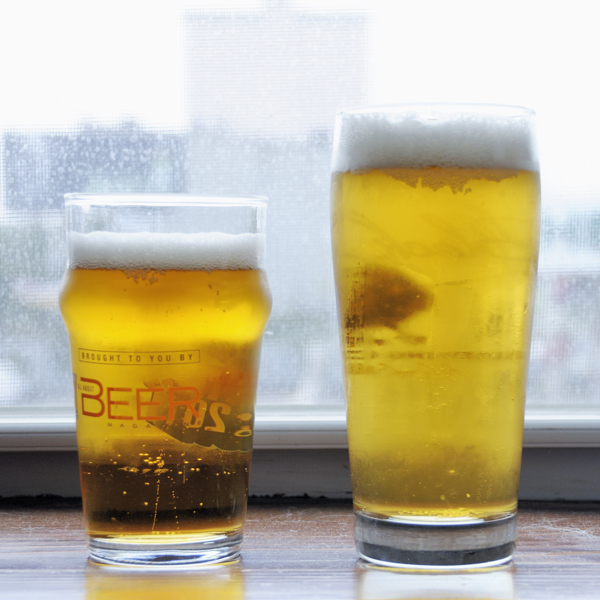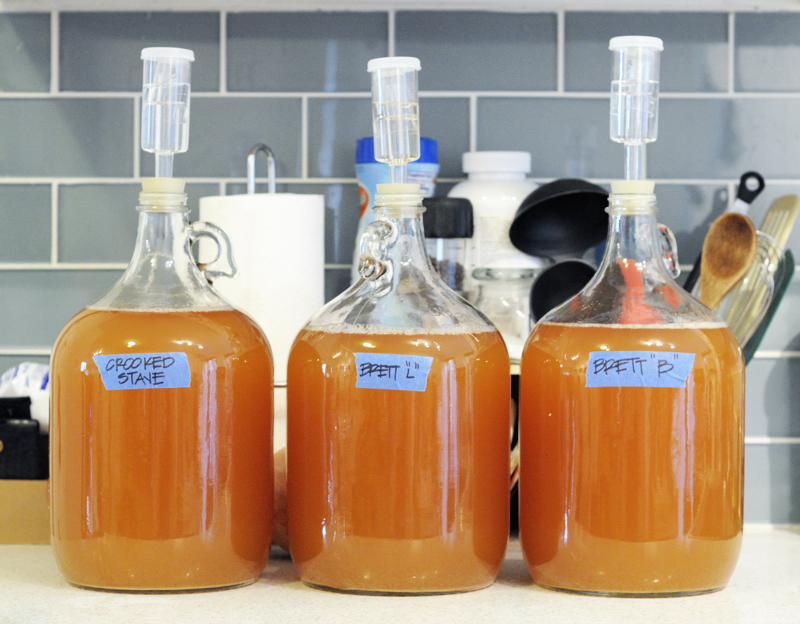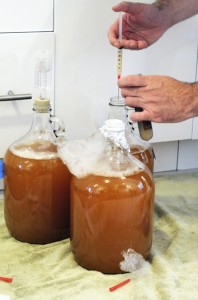The wait is over. Five weeks after my brewday, it was time to tap my keg of Czech Pils and give it a shot. Instead of doing a standard BJCP review of this beer, I’m going to compare and contrast it against a common beer that most people know and have readily available, Pilsner Urquell.
Aroma:
Both beers have a nice, mildly spicy Saaz hop aroma that melds nicely with the touch of residual sulfur from the lager yeast. The Saaz hops are not as present in my beer as I would have thought considering the large hop back charge they were given. There is an unfortunate touch of mango-like hop aroma in my beer — probably attributable to bittering with Citra hops and in spite of the 90 minutes which they were boiled. The Urquell has some honey-like, candied malt aromas not present in my beer, along with a touch of butterscotchy diacetyl.
Appearance:
Claritywise, both beers are nearly identical — brilliantly clear. Both have nice bright white heads, with the homebrew out-persisting the commercial beer. Both are golden with the Urquell being a hair darker.
Flavor:
The biggest difference between the two beers is in bitterness. My homebrew is considerably more bitter and is much more similar in balance to something like Victory Prima Pils. The malt character is nearly identical, although the Urquell is rounder and slightly sweeter. Again, the hops in my beer are slightly tropical which doesn’t fit the style.
Mouthfeel:
Both beers feature similar medium bodies, although my beer is slightly more carbonated, giving it a sharpness the Urquell doesn’t have.
Overall:
Both are great beers. My beer almost comes off as a German Pils with its aggressive bittering and lack of soft malt. Straight out of the fridge, I prefer the Urquell because it isn’t as sharp and has a nicer almost sweet malt character. As the beers warm, the diacetyl in the Urquell comes to the forefront and is a bit off-putting, making me prefer the homebrew.



